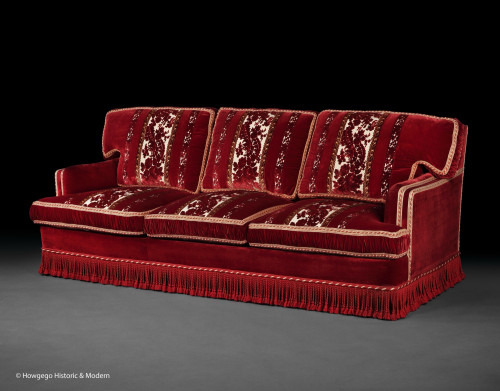Antiquarian, Baroque-Revival, Ebonised, Beech Stool With 'S' Scroll legs & Stretcher with Amorini Holding a Coronet, Re-upholstered in Bargello
11869
This antiquarian, Baroque-Revival stool demonstrates the revival of this style in large, country house interiors at the tail end of the 19th and beginning of the 20th century and has many characteristic Baroque features, combining the latest French designs and comfort in seat furniture design. It also demonstrates the revival of interest in ebony and ebonised pieces as a luxury item for the elite market. Called BLACK GOLD in the 17th century ebony was the most expensive wood; an instantly recognisable, status symbol, only within the reach of Kings and the Aristocracy. Ebonised furniture imitated ebony which was valued for its colour and smooth, polished, texture imitating lacquer. In the 1690s it was advised that 24 coats of seed-lac were applied, each one being allowed to dry before the next coat was applied, then polished. The ebonising on this armchair has been repolished so that the lustre reinstates the original, lacquer effect finish creating a striking, luxurious finish.
The bargello upholstery is a re-creation of a fashionable Baroque embroidery with strong colours and a glow that complements the black lacquered effect of the wood
PROVENANCE : Private collection, acquired to represent three different periods of European manufacture & collecting of ebonised furniture; the 17th, 18th and 19th centuries. The 18th century armchair (top left in group photograph and illustrated below) is still available.
BIBLIOGRAPHY : Adam Bowett, English Furniture 1660-1714 From Charles II to Queen Anne (Woodbridge, England: Antique Collector's Club, 1988),
Stool: Height 50.50cm., 20 inches., Length 58cm., 23 inches., Depth 44.50cm., 17½ inches.
17th Century
circa 1690
Ebony
England
Collectors
Baroque (Of the period)
Joinery
GOOD. Wear consistent with age and use.
3















